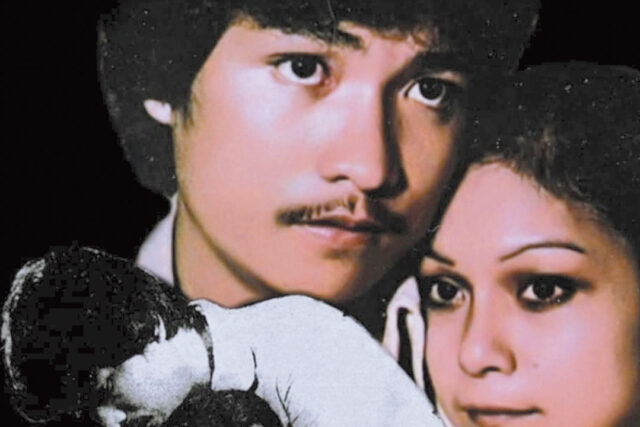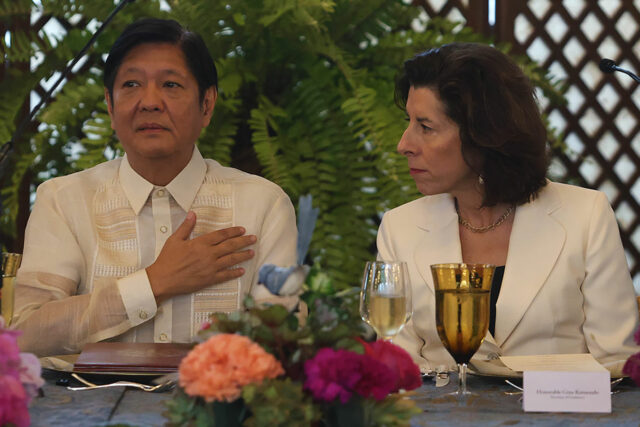It was Rudyard Kipling who once wrote that if we can think and not make thoughts our aim, or if we can meet with Triumph and Disaster and treat them just the same — ours is the Earth and everything that’s in it. Most important, we’ll be a Man!
Well, some real men came forward recently and published their own reflections on the economics profession in the March 2024 issue of the International Monetary Fund’s (IMF) Finance and Development (FD).
The urgency could not have been coincidental. The key issues these real men raised were broadly the same topics we discussed during the quarterly meeting of the ASEAN+3 Macroeconomic Research Office Advisory Panel in Singapore two days ago. They may very well be existential because fundamental questions are unavoidable as we face the issue of the retreating pace of economic progress. Our region has an aging population. Global trade is shifting radically. Technology and innovations are changing exponentially to drive productivity, address structural challenges, and generate new growth drivers.
In her excellent overview of the FD special issue, editor-in-chief Gita Bhatt cited contemporary disruptors, namely climate change, artificial intelligence, demographic change, social and income inequality and geopolitical conflicts. She argued that what the world needs today is to consider John Maynard Keynes’ view that economics is a moral science that draws from various perspectives with an “open mind to the shifting picture of experiences.” She observed that such soul-searching earnestly began during the global financial crisis of 2008 that made it imperative to “better integrate social sciences and elevate welfare and distributional issues.”
We start with the 2015 Nobel Laureate, Angus Deaton, whose view is both compelling and arresting. A professor emeritus at Princeton, Deaton wisely observed that “when efficiency comes with upward wealth distribution, our recommendations frequently become little more than a license for plunder!” This happens when we subscribe to Lionel Robbins’ definition of economics. Its stronger definition is commonly heard from the older-style IMF economists, and economist technocrats in government: economists should keep themselves busy achieving efficiency, and leaving the issue of equity to others — who else but the politicians and the executive.
The problem, according to Deaton, is that those others rarely deliver. Hence, his quote about public policy being more than a license for plunder.
Deaton admitted that economics seems to be in disarray despite the vast frontiers of knowledge it has conquered. He said economists failed to predict the financial crisis. Economists were virtually paralyzed because they were anchored on market efficiency, especially financial markets who’s functioning very few fully understood.
No different from the others, the Nobel laurate, after 50 years as a professional economist, found himself “changing (my) mind.” He admitted to having failed to dwell on the role of corruption in his various works and intimated that some economists have a vested interest in capitalism as it is currently structured and operated. He has also changed his mind about the unions that he thought were nothing but a nuisance. Today, big corporations and conglomerates are dominant on issues such as working conditions and wages. Citing Daron Acemoglu and Simon Johnson — he must be referring to their book, Power and Progress (2023) — even the direction of technical change has always depended on who has the power to decide. Hence, he believes that the profession’s zeal for technology as an instrument of what he called “universal enrichment” may no longer hold.
Deaton is now skeptical about the advantages of open trade. He questioned the idea that he long subscribed to, that globalization brought about the huge reduction in global poverty over the past 30 years. He even cited the case of India where poverty reduction has little to do with global trade.
As a mark of humility, Deaton also suggested that economists could benefit from deeper engagement with philosophers, historians, and sociologists, who could also benefit from whatever economics could share to enrich their respective disciplines.
Humility. It is that Jayati Ghos, professor at the University of Massachusetts, Amherst, proposed that economics must have, with a better sense of history and greater diversity. With contemporary challenges such as planetary health and the environment, Ghosh pointed out that if these are not resolved, and resolved fast, the attendant tensions and geopolitical conflicts may lead to dysfunctional and unlivable societies.
She traced the perennial problem to what has been handed down to us, the received wisdom from economics that she termed as misleading, and in her words, “simply wrong.” Ghosh argued that “the original sin could be the exclusion of the concept of power from the discourse, which effectively reinforces existing power structures and imbalances.” Many underlying conditions are ignored like the greater power of capital over labor, private abuse of market power, and rent-seeking behavior and this must sound extremely familiar in the Philippine context — “the use of political power to push private economic interests within and between nations.”
Ghosh also critiqued the so-called power hierarchies in the economics profession: “the enforcement of strict power hierarchies within the discipline has suppressed the emergence and spread of alternative theories, explanations and analysis.” To her, top journals and academic and professional employment are tyrannical. Journals publish such contributions that “add value only by relaxing one small assumption in a model or using slightly different econometric test.” Contributions that tackle issues that may not lend easily to quantification are set aside even if they could yield better understanding of economic challenges. “Externalities” are conveniently used to capture major constraints that are better addressed, rather than dismissed as such.
These and other flaws, to Ghosh, have resulted in the poverty of economics. “Much has to change if economics is really to become relevant and useful enough to confront the major challenges of our times.”
Oxford University professor Kate Raworth, author of the best-selling book Doughnut Economics: Seven Ways to Think Like a 21st Century Economist, believes that “economic renewal must begin with the goal of human flourishing on a thriving, living planet.” Such renewal must begin with a new compass and map that are up to our times, following Keynes’ exhortation that the choice of models should be relevant to what our times demand.
She observed that economics continues to use the same monetary flows that circulate between households and firms, and banks and governments that Paul Samuelson pioneered in the 1940s. But Raworth argued that Samuelson’s model excluded energy, materials, and waste involved in economic activity. Instead, she suggested a more holistic and biocentric roadmap.
Based on this framework, energy, not money, is the fundamental currency of life. It should follow that the usual issue of finance must be tackled with the end goal of servicing the real economy in service to life. To her, this approach represents a conceptual revolution.
Finally, Dani Rodrik of Harvard’s John F. Kennedy School of Government encouraged his fellow economists who want to be relevant and useful to society to offer something constructive to such issues as climate transition, inclusive economies, and economic development in poor economies. They must avoid cookie-cutter Econ 101 solutions.
Rodrik thinks that mainstream economics is neoliberalism, which posits the idea that markets must expand with minimal government intervention. The problem is that, as Rodrik explained, this approach failed: it helped widen inequality within nations, did little to address climate change, and institutionalized some blind spots in public health and supply chains.
Rodrik has his own version of the original sin. The neoliberal paradigm depended unduly on a few simple, universal rules of thumb. “If neoliberalism was economics in action, it was bad economics that was on display.”
He called for a newer, more imaginative formulation of the problems and challenges of some existential issues. On climate change, economists should stop being first-best purists focused on the efficiency costs of climate change policies. Second-best and political constraints should be considered rather than set aside altogether. He advised developing countries to rely less on industrialization and more on productive employment in modern services.
On globalization, he deplored the fact that hyper globalization has actually resulted in distributional conflicts, diminishing resiliency, and the geopolitical race between the US and China. To him, the major powers should stop prioritizing geopolitics on the basis of a zero-sum game. Economists could be very helpful here if they were to design new rules on globalization based on the principle of rebalancing. Corner solutions in economics have been rarely optimal; trade-offs in trade, finance, and the digital economy are unavoidable and they are not necessarily sub-optimal.
Are we coming of age? If we can think and imagine but do not allow ourselves to be wedded to what thoughts we have been born to, and treat Triumph and Disaster equally, the Earth is ours and its fullness. We become a man humble enough to change our course for the benefit of our kind.
Diwa C. Guinigundo is the former deputy governor for the Monetary and Economics Sector, the Bangko Sentral ng Pilipinas (BSP). He served the BSP for 41 years. In 2001-2003, he was alternate executive director at the International Monetary Fund in Washington, DC. He is the senior pastor of the Fullness of Christ International Ministries in Mandaluyong.














